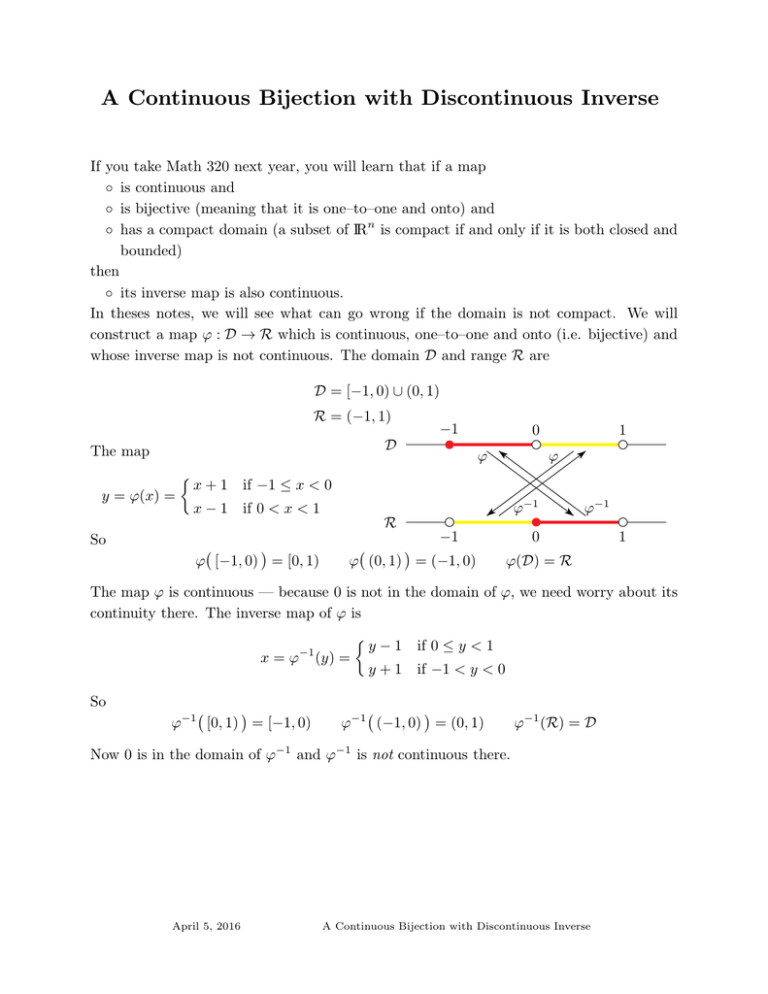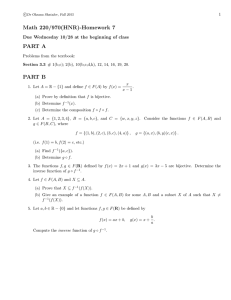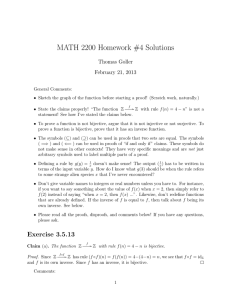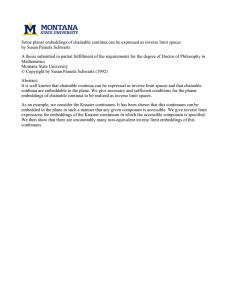A Continuous Bijection with Discontinuous Inverse
advertisement

A Continuous Bijection with Discontinuous Inverse If you take Math 320 next year, you will learn that if a map ◦ is continuous and ◦ is bijective (meaning that it is one–to–one and onto) and ◦ has a compact domain (a subset of IRn is compact if and only if it is both closed and bounded) then ◦ its inverse map is also continuous. In theses notes, we will see what can go wrong if the domain is not compact. We will construct a map ϕ : D → R which is continuous, one–to–one and onto (i.e. bijective) and whose inverse map is not continuous. The domain D and range R are D = [−1, 0) ∪ (0, 1) R = (−1, 1) −1 0 1 D The map ϕ ϕ y = ϕ(x) = x + 1 if −1 ≤ x < 0 x − 1 if 0 < x < 1 ϕ−1 ϕ−1 R 0 −1 So ϕ [−1, 0) = [0, 1) ϕ (0, 1) = (−1, 0) 1 ϕ(D) = R The map ϕ is continuous — because 0 is not in the domain of ϕ, we need worry about its continuity there. The inverse map of ϕ is x=ϕ −1 (y) = y−1 if 0 ≤ y < 1 y+1 if −1 < y < 0 So ϕ−1 [0, 1) = [−1, 0) ϕ−1 (−1, 0) = (0, 1) ϕ−1 (R) = D Now 0 is in the domain of ϕ−1 and ϕ−1 is not continuous there. April 5, 2016 A Continuous Bijection with Discontinuous Inverse








